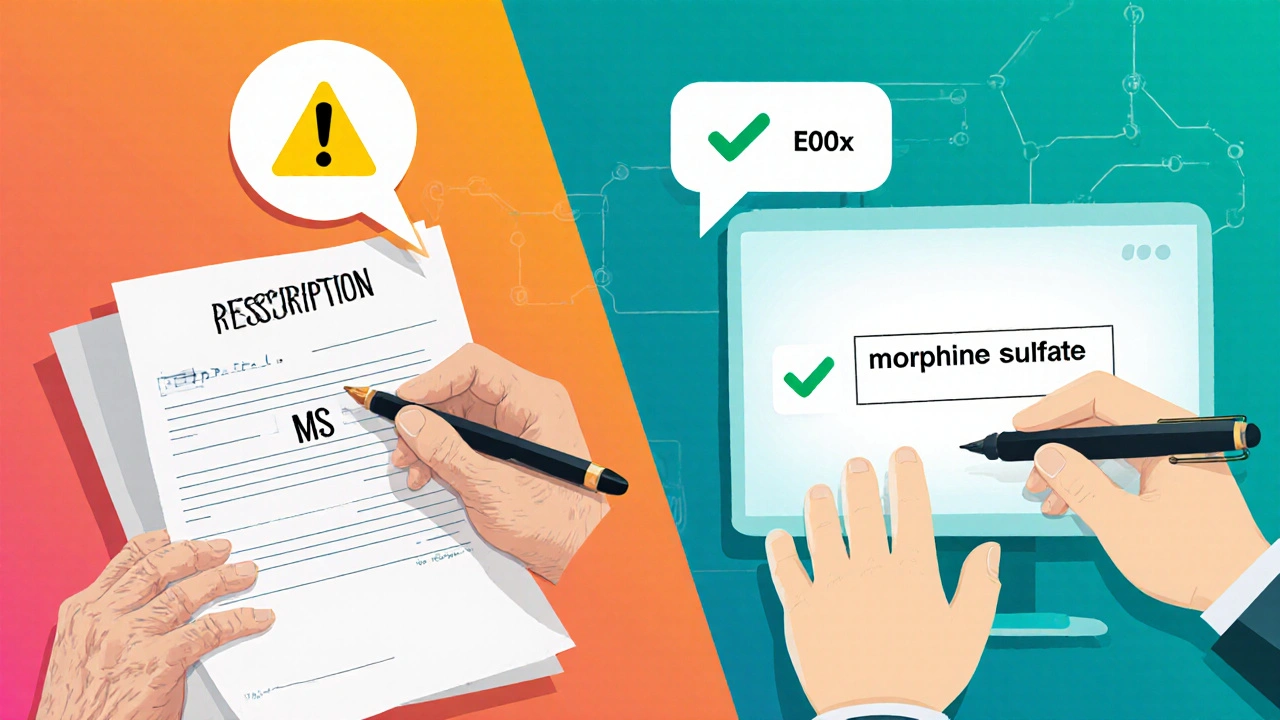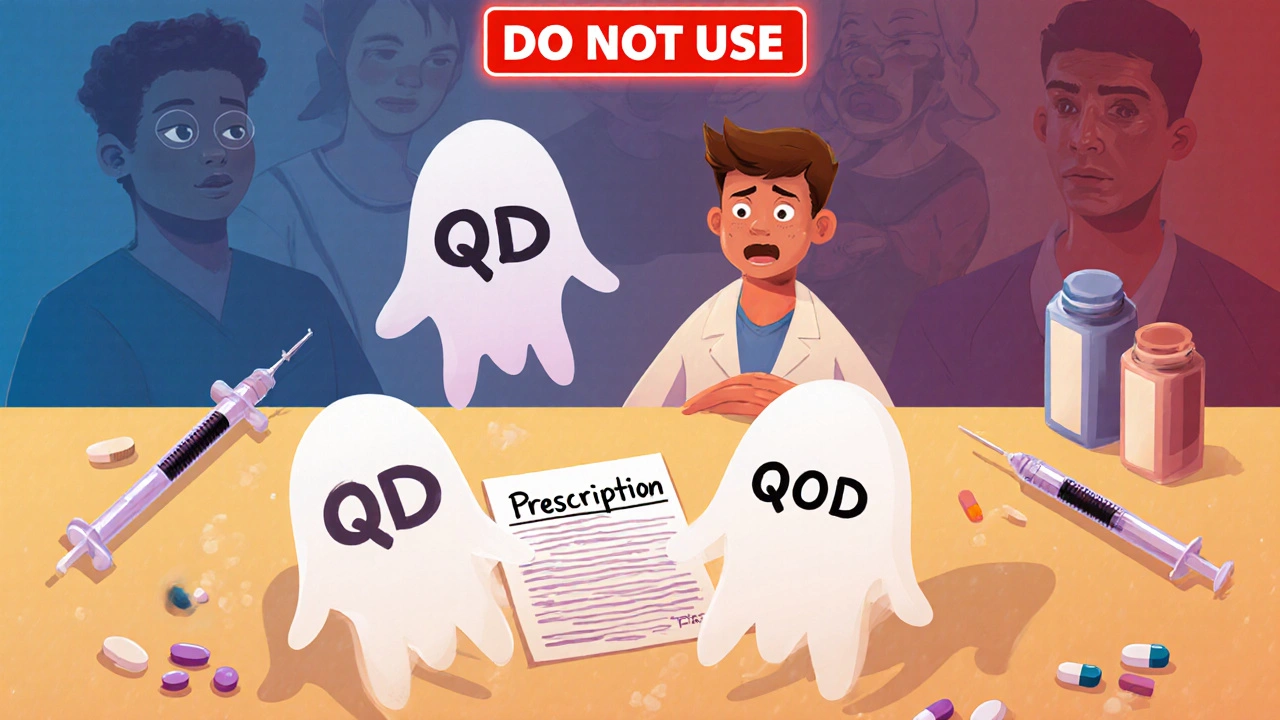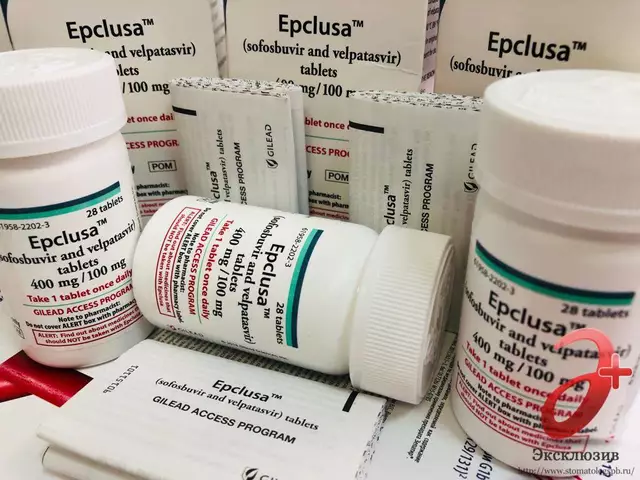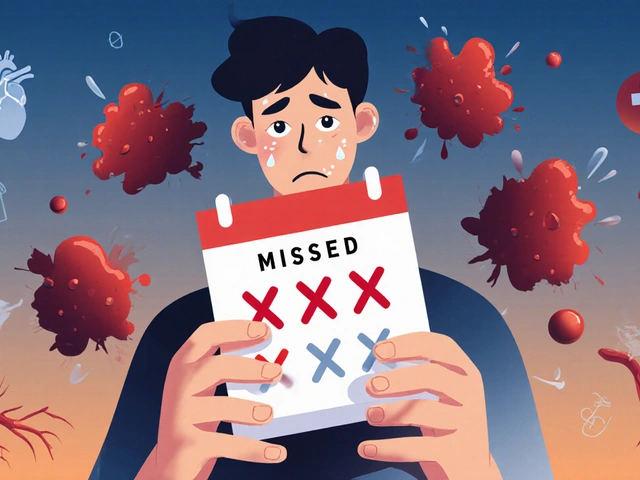One wrong letter on a prescription can kill. It’s not hyperbole-it’s data. In 2022, the Institute for Safe Medication Practices (ISMP) reported that dangerous medical abbreviations were directly linked to over 1,500 preventable deaths in U.S. hospitals alone. These aren’t typos. They’re standardized shortcuts that doctors, nurses, and pharmacists have used for decades-until someone got hurt. And it keeps happening.
Why These Abbreviations Are So Dangerous
The problem isn’t that people are careless. It’s that some abbreviations look too similar to others. A handwrittenQD (once daily) can easily be mistaken for QID (four times daily). A tiny U for units looks just like a 0 or a 4. When a pharmacist reads MS on a script, are they seeing morphine sulfate-or magnesium sulfate? One is for severe pain. The other is for heart rhythm issues. Mix them up, and you’re giving a heart patient a powerful opioid. That’s how someone ends up in the ICU-or worse.
The Joint Commission and ISMP have been warning about this since 2001. Their Do Not Use list wasn’t created in a boardroom. It was built from real incidents: patients who died because a nurse misread a script, a pharmacist dispensed the wrong drug, or a doctor didn’t realize how ambiguous their shorthand was.
The Top 5 Most Deadly Abbreviations
Here are the five abbreviations that still cause the most harm-even in 2025, despite decades of warnings.- QD - Intended to mean “once daily.” But it’s often misread as QID (four times daily) or even QOD (every other day). A 2018 ISMP analysis found that
QDwas involved in 43.1% of all abbreviation-related errors. That’s nearly half. - U - Stands for “units.” But it looks like a zero, a four, or even the letter V. A diabetic patient was once given 100 units of insulin instead of 10 because the
Uwas misread as00. The patient went into a coma. - MS or MSO4 - Means morphine sulfate. But it’s nearly identical to
MgSO4(magnesium sulfate). These drugs are completely different. One calms pain. The other treats seizures. Confusing them has led to fatal overdoses. - SC or SQ - Both mean subcutaneous. But
SChas been misread asSL(sublingual), andSQhas been mistaken for “5 every.” One patient received a subcutaneous injection meant for insulin-but the label was misread as a five-dose oral schedule. The result? Underdosing, worsening diabetes, and hospitalization. - cc - Stands for cubic centimeters. Sounds harmless, right? But it’s often confused with
u(units). In 2019, a child received 5 cc of a medication instead of 5 units. The dose was 100 times too high. The child survived-but barely.
What Replaced Them
The solution isn’t to stop writing prescriptions. It’s to write them clearly.- Replace
QDwith “once daily” - Replace
Uwith “units” - Replace
MSwith “morphine sulfate” andMgSO4with “magnesium sulfate” - Replace
SCorSQwith “subcutaneous” - Replace
ccwith “mL” (milliliters)

Electronic Prescribing Didn’t Fix Everything
You’d think EHRs (electronic health records) would solve this. They’ve cut abbreviation errors by nearly 70%. But here’s the catch: 12.7% of errors in EHRs still come from abbreviations. Why? Because doctors still type free-text notes. They type “MS 10 mg SC” because it’s faster. The system doesn’t always flag it. Or worse-some EHRs still allow dropdowns with “U” or “QD” as options. A 2023 study found that hospitals using EHRs with hard stops-meaning the system won’t let you submit a prescription with a banned abbreviation-saw an 84.6% drop in errors. Hospitals that only trained staff? Only 52.3% improvement. The difference? Enforcement.Who’s Still Using These Abbreviations-and Why
You’d assume everyone stopped by now. But a 2022 American Medical Association survey found that 43.7% of physicians over 50 still use banned abbreviations. Why? Habit. Tradition. “That’s how I was taught.” Older doctors grew up writing prescriptions by hand. They saw “QD” on every script. They didn’t know it was dangerous. Now, they’re resistant to change. Younger doctors? Only 18.2% still use them. They were trained with EHRs that auto-correct or block these terms. It’s not just doctors. Nurses and pharmacists report that some prescribers get defensive when corrected. One pharmacist in Cambridge told me: “I’ve intercepted a ‘QD’ error three times this month. One doctor told me, ‘I’ve been writing this for 30 years. You’re telling me I’m wrong?’”Real Cases, Real Consequences
In 2022, a Reddit thread titled “Caught a potentially fatal abbreviation error today” had over 140 comments. Every single one was a near-miss. One pharmacist wrote: “I saw ‘TAC 0.1%’ on a script. I thought it was Tazorac (a strong acne cream). But TAC is triamcinolone-a steroid. The patient had eczema, not acne. If I hadn’t double-checked, they’d have gotten the wrong treatment for weeks.” Another case from Mayo Clinic in 2020 involved a patient on chlorambucil (a chemotherapy drug). The order said “BIW”-twice weekly. But the pharmacist read it as “twice daily.” The patient received three times the intended dose. They survived, but spent two weeks in the hospital with bone marrow suppression. These aren’t rare. The ASHP’s 2022 Medication Safety Survey found that 63.7% of pharmacists intercepted at least one dangerous abbreviation error in the past year. The top three?QD, U, and MS.

How to Protect Yourself
If you’re a patient: always ask. If your prescription says “QD” or “U,” ask your pharmacist to spell it out. Don’t assume it’s safe. If you’re a clinician: write it out. Even if it takes 3 extra seconds. “Once daily” is clearer than “QD.” “Morphine sulfate” is safer than “MS.” If you’re in charge of a clinic or hospital: don’t just train staff. Block the abbreviations in your EHR. Make it impossible to submit a prescription with them. Add real-time alerts. Reward staff who catch errors. Make safety part of your culture-not just a policy.What’s Changing Now
In January 2024, ISMP added 17 new abbreviations to their list-mostly related to HIV medications likeDOR, TAF, and TDF. Why? Because between 2019 and 2023, errors with these codes jumped by 227%. That’s not a glitch. That’s a growing crisis.
EHR companies like Epic are now using AI to scan prescriptions in real time. If you type “MS,” the system doesn’t just warn you-it auto-corrects to “morphine sulfate.” By 2026, 85% of major EHRs will do this during voice dictation too.
The goal isn’t to punish doctors. It’s to prevent a child from dying because someone wrote “U” instead of “units.”
Final Thought: It’s Not About Speed. It’s About Survival.
No one writes “QD” because they’re lazy. They write it because it’s faster. But in medicine, speed isn’t the goal. Accuracy is. A prescription isn’t a text message. It’s a life-or-death instruction. The data is clear: eliminating these abbreviations prevents 37% of medication errors. That’s not a small number. That’s tens of thousands of lives saved every year. If you’re reading this and you still use any of these abbreviations-stop. Today. Not tomorrow. Not next week. Today. Your patient can’t afford to wait.What is the most dangerous medical abbreviation?
The most dangerous abbreviation is QD (once daily). It’s misread as QID (four times daily) or QOD (every other day) more than any other abbreviation, accounting for over 43% of all abbreviation-related medication errors according to ISMP data. Even small misinterpretations can lead to fatal overdoses.
Why is 'U' for units dangerous?
The letter 'U' for units is easily confused with '0' (zero), '4' (four), or even 'cc' (cubic centimeters). A diabetic patient once received 100 units of insulin instead of 10 because the 'U' was misread as '00.' This led to a life-threatening low blood sugar episode. That’s why 'units' must always be written out in full.
Is 'MS' the same as 'MgSO4'?
No. 'MS' stands for morphine sulfate, a powerful opioid used for pain. 'MgSO4' stands for magnesium sulfate, used to treat seizures and high blood pressure in pregnancy. They are completely different drugs. Confusing them has caused fatal overdoses. Always write out the full drug name.
Are electronic prescriptions safer?
Yes-but not completely. EHRs reduce abbreviation errors by about 68%, but 12.7% of errors still happen because doctors type free-text notes or use outdated dropdown menus. The safest systems block dangerous abbreviations entirely and force full spelling. If your EHR doesn’t do that, it’s not fully protecting patients.
What should I do if I see a dangerous abbreviation on a prescription?
Never dispense or administer a medication based on an ambiguous abbreviation. Contact the prescriber immediately and ask them to rewrite the order using full terms: 'once daily,' 'units,' 'morphine sulfate,' etc. This is not overcautious-it’s standard safety protocol. Pharmacists are trained to do this. So should every clinician.
Are these rules the same in the UK?
Yes. NHS England’s 2021 Safer Practice Notice requires all healthcare providers to avoid the same dangerous abbreviations as the U.S. Joint Commission. The list includes 'QD,' 'U,' 'MS,' 'cc,' and others. The goal is global: no patient should be harmed by a poorly written letter.
Can AI help prevent these errors?
Yes. Major EHR systems like Epic now use AI to scan prescriptions in real time. If you type 'MS,' the system auto-corrects it to 'morphine sulfate.' Some systems even flag handwritten notes in scanned prescriptions. By 2026, most voice-to-text systems will automatically replace banned abbreviations during dictation. But AI isn’t a substitute for clear writing-it’s a safety net.







daniel lopez
November 20, 2025 AT 12:21